Welcome! If you found this article, or my most recent pieces on how We’re Desperate for Potency or Dreambuilding to be useful, I invite you to become a free subscriber to get more of my articles on the intersection of strategy and culture.
My team and I do cultural strategy. That means we help brands move the needle of culture forward so that they become the natural winners in their markets. The only effective way to win as a culture brand is to change the rules and conditions of your category so that they benefit you, while displacing your competitors.
AI heightens this truth. It’s a force multiplier that amplifies the flaws of weak mental models and compounds the power of strong ones. Everything depends on the mental models you use to see the game you’re playing.
Culture brands don’t typically win by being better. They win by moving the goalposts for everyone around them. You should always be aiming to change the larger playing field.
The 3 Stages
Strategy has 3 stages, and these are some of the core mental models we use in each stage to change the game for our clients:
Stage 1: Exploration
1. Tight & Loose Culture
2. The Shape of the Market
3. Innovation Happens at the Intersections
4. Rumsfeld Matrix
5. ‘T’ Shaped Information Diet
Stage 2: Decision
6. Divergent & Convergent Thinking
7. The Ingredients of Play
8. Tension Earns Attention
9. Inversion
10. Local vs. Global Maxima
Stage 3: Action
11. Friction vs. Fuel
12. Memetic Desire
13. 7 Dimensions of Persuasion
14. Pre-Mortem
15. Fall To Your Systems
You will find these are not your typical mental models, because they are less about creating trendy companies and more about doing the hard work of changing the market around the company. That’s what makes a true culture brand.
Most organizations stall because they explore too narrowly, decide too slowly, and execute without discipline. These tools are designed to fix those gaps.
Let’s start with Exploration tools…
#1. Tight & Loose Cultures
Sociologist Michele Gelfand tells us cultures exist on a spectrum, from tight (clear rules, strict enforcement, low tolerance for deviation) to loose (flexible norms, minimal enforcement, high tolerance for non-conformity). This applies not just to nations but also to markets, industries, and communities.
When a culture leans too far in one direction, people crave the other. In tight arenas like finance or healthcare, innovation often comes from injecting looseness: more choice, alternative paths, and space for new norms. In loose arenas like AI or parenting, value emerges from adding clarity: reducing overwhelm, narrowing options, and offering guidance.
Use this lens to identify the cultural pressure of the market you’re playing in. Is it too tight or too loose? The answer will tell you the kind of value people will pay attention to, and the innovations most likely to gain traction.
I’ve written more about how to build tight and loose culture brands here.
#2. The Shape of the Market
Market and cultural innovation follows an incredibly predictable cycle with three phases: Tension, Exploration, and Disruption. Each phase has its own rules for success. When you’re researching an industry, start by identifying what stage it’s in. It will reveal the playbook for winning.
Even the right strategy deployed at the wrong stage will fail. This tool will help you identify the driving constraints and market forces acting on your space so you can find the levers that matter most.
#3. Innovation Happens at the Intersections
Every legendary story of innovation is a story of outside-in change, a disruptive person or company that took an insight from one context and applied it to another. Despite this, most companies fixate only on their immediate competitors.
The real signals of change come from adjacent fields that are moving the bar for your audience. To see the future of your market, find who is changing their behaviors, expectations, and technologies of culture at large.
#4. Rumsfeld Matrix
You can’t find a competitive advantage if you’re using the same signals as everyone else. AI has only amplified this problem, flooding the field with identical insights. The Rumsfeld Matrix is a simple but powerful tool for uncovering the overlooked and finding truly novel information.
All of these quadrants matter, but Unknown Knowns in the bottom left are usually the most fruitful for strategy. That is where culture is primed for change but hasn’t had a chance to express itself yet.
#5. ‘T’ Shaped Information Diet
Information diets are the most overlooked lever in strategy. They’re the invisible input that quietly determines who breaks new ground and who blends into the crowd. Most teams never think about it, defaulting to the same sources everyone else uses, and getting the same results.
The strongest teams build T-shaped information diets, intentionally broad across topics, with each member going deep in a different domain. To reach differentiated insights, your knowledge graph must touch territories your competitors don’t, going both broader and deeper than they do. This requires delegation and intent, where each person owns a unique vertical of expertise but the horizontal is built collectively.
An effective diet has two stages: gathering and processing. Gathering is about casting a wider net for novelty, breadth, and depth, finding signals others miss. Processing is about digesting those signals through discussion, debate, and synthesis so raw information becomes sharp, novel insight. Most teams do the first and skip the second. The best build a culture around both, because your strategy is only as strong as the quality, diversity, and digestion of your information diet.
My cofounder
wrote a whole guide on how to clean up your information diet with step-by-step instructions here.Moving on to Stage 2 with Decision…
#6. Divergent & Convergent Thinking
Strategy mirrors the creative process, which has two distinct phases: divergent and convergent thinking. Each demands a fundamentally different mindset and approach. Many teams stifle their creativity by blending the two parts of the process together.
The hardest part is knowing when to go from divergent to convergent. My personal rule of thumb is this: when new information isn’t making you feel confused, uncomfortable, or excited anymore, that probably means it’s time to start making connections in the convergent stage. At that point, divergent thinking has started giving you diminishing returns and it’s time to start playing on the convergent side.
#7. The Ingredients of Play
Play is one of the most powerful drivers of culture and innovation, where new ideas are born and teams build the trust to explore them fully. But in most business environments, play is rare. It can’t be forced, scheduled, or scaled on demand. It emerges only under the right conditions.
Our framework above shows those conditions: Freedom (participation is voluntary), Safety (ideas can be shared without fear of judgment), and Separateness (a distinct space away from routine). When these overlap, a special set of rules emerges, with norms unique to the play space that unlock creativity and collaboration.
If you want your team to think bigger and move faster, design environments where these three conditions are present. Protect them, and play will become the incubator for your next cultural shift or breakthrough idea.
#8. Tension Earns Attention
The currency of strategy is attention, and you win or lose it in seconds. Tension is how you earn it. If you can’t create tension, you won’t get engagement, and without engagement, you have no brand. But tension evolves. Just like markets, tensions turn over. To stay relevant you need to know which tensions are emerging, which are saturated, and be early to the next shift.
I break this down in a lot more detail in my article Tension Branding. Or watch me review it at hyperspeed in this TikTok.
#9. Inversion
Too often teams are set up for failure before they even start, because they’re focused on solving the wrong problem. The most innovative solutions are always found in reframing the problem itself.
At Dallas–Fort Worth Airport, passengers complained about long waits at baggage claim. The default frame was How do we speed up baggage delivery? That thinking led to costly, incremental fixes. When the question was inverted to How do we make the wait disappear? the answer was easy: move baggage claim farther from the gates so passengers walked more and waited less. Complaints vanished without adding new equipment.
In Japan, bullet train passengers were frustrated by cleaning delays between runs. The starting frame was How do we make cleaning faster? Inverting it to How do we make the wait feel justified? produced a different solution. They gave cleaners distinctive, visible uniforms so passengers could see the work being done. Understanding the purpose reduced frustration and led passengers to keep trains cleaner over time.
In both cases, the breakthrough didn’t come from pushing harder on the original question, but from reframing it entirely. Inversion forces you to break free from default thinking and see the problem through a different lens.
If you want original solutions, slow down before you speed up. Take the time to frame and reframe the problem before leaping to answers. Ask: What if the opposite were true? What’s the real goal? What if our constraints were completely different?
Skipping this step locks you into narrow perspectives and predictable solutions. Treat problem-framing as a separate, deliberate stage, and you’ll unlock possibilities the default frame will never reveal.
#10. Local vs. Global Maxima
Many companies get stuck in a local maximum, performing “well enough” but far from their true potential, because reaching the next peak means crossing a trough of lower performance. That dip is the switching cost, and without enough of a commitment, many businesses stall at the bottom, floundering in indecision, burning resources and running out of road.
In hindsight the principle is obvious, but in practice, lack of follow-through kills many strategies. The key is to plan for the trough, commit to the climb, and build systems to see the change through to its reward.
Moving on to the final stage with Action…
#11. Friction vs. Fuel
When we want to drive a behavior, our instinct is to add more fuel, more motivation, more incentives, more marketing. But fuel only works if the path is clear. More often than not, the fastest gains come from removing the friction that blocks action in the first place. Leaders and strategists are biased toward fuel, yet removing friction is usually the higher-leverage move.
When designing for behavior change, map both the fuel that drives action and the friction that holds it back. Only by understanding, and intentionally shaping both can you create the conditions for a new behavior to take root.
#12. Memetic Desire
We don’t want things, we want to be like the people who have those things. This is Memetic Desire, and it was coined by Rene Girard, the iconic Stanford sociologist behind many of Silicon Valley’s most prolific founders.
We don’t want the boat, we want to be like the person who has the time to sail.
We don’t want education, we want to be seen as someone who’s successful.
We don’t want the gym membership, we want to be the person who’s incredibly fit.
If you want to inspire a sense of desire in what you’re offering, you can’t just tell them what to desire, you have to show them a clear picture of who they can become. Desire is a game of feeling things not having things.
Ask yourself if you’re really answering this question for your audience.
#13. 7 Dimensions of Persuasion
There are seven levers to persuasion, and every deal is ultimately won or lost because of one of them. This is the landscape that every proposition lives within. The challenge is in finding which lever is the real blocker for your sale.
Evaluative
1. Value Perception
There’s the value you think you’re providing, and the value they believe they’re getting. Close that gap so no value goes unseen or unappreciated.
2. Risk Perception
A high upside can be neutralized by high perceived risk. Grow the reward, but also justify the risk so it feels worth taking.
3. Urgency
Timing can matter as much as value. Are you solving a problem they feel now? Reach them when the pain is sharpest.
Relational
4. Trust & Credibility
Even the best deal fails without trust. Build both rational trust (proof, track record) and emotional trust (rapport, connection) in the language this audience responds to.
5. Control & Autonomy
People resist feeling coerced They want to feel smart for saying yes. Make the sale feel like an IQ test, giving them a sense of control and ownership over the decision.
Internal
6. Psychological Readiness
The offer might be perfect, but if they’re not ready, it won’t land. Identify the steps that warm them up so “yes” feels like the natural next move.
7. Identity & Value Resonance
We act in ways that affirm who we are, or want to be. Asking someone to change their mind is asking them to shift identity. Make your offer a form of self-expression that aligns with, or offers a compelling new version of, how they want to see themselves.
#14. Pre-Mortem
Most teams plan as if everything will go right yet rarely ask the far more important question of What if it doesn’t? This simple exercise, often skipped, can dramatically increase the odds of success in just one hour.
Have your team imagine the initiative has already failed. Work backwards and ask yourselves how it happened. Capture every possible cause, rank them by likelihood, and design ways to prevent or mitigate each one before you launch.
You’ll be surprised by how much foresight your team already has, gut instincts, hard-won experience, and pattern recognition that normally go unspoken. A pre-mortem gives those insights a forum, turning unvoiced concerns into practical safeguards that make your strategy far more resilient.
#15. Fall To Your Systems
Everyone at the starting line has the same goal to win the race. What separates the winners and losers isn’t their intentions, it’s the systems they built. This is why James Clear argues, “We don’t rise to our goals, we fall to our systems.”
Strategies are only as good as their implementation. With every new strategy, businesses need to create internal processes that hold themselves accountable to executing the strategy consistently.
Too often, new strategies land with a bang but gradually regress back to the old way of doing things. Old habits return, teams drift apart in how they interpret the strategy, and new leaders come in wanting to shake things up, and the strategy gets diluted remarkably quickly.
Without strong systems of accountability, consistency and communication, strategies are just goals.
Build Your Strategic Toolkit
These mental models are just a small part of the training workshops we do for organizations. Our workshops create a master system for how your team spots signals, makes decisions, and executes with discipline. If you want your people to think strategically and act like futurists, reach out to us at hi@theconceptbureau.com.
Unbreakable Business
This is one of the deepest and richest conversations I’ve had about my work and how I’ve built Exposure Therapy and Concept Bureau. If you want to get into my head, I tell you everything in this conversation on the Unbreakable Business podcast:
Building the kind of intuition that separates good strategists from incredible ones
The 3 parts of our research and development process
Compelling cultural and brand case studies that have captured my mind lately
My advice to other business owners trying to build something similar
The Singularity that underpins so much of business and culture right now
Moral static and how brands can barrel through the fog of fear
Getting weird with AI and the creative act of predicting the future
Making a “bendy” business instead of a brittle one
Link Daddies
Instead of our usual list of links, I’d like to shoutout 3 of my favorite newsletters with the best link roundups out there.
: and are not only brilliant brand strategists themselves, they’re also incredibly tapped into both culture and industry. They consistently bring the insights and news that matter but most others (including yours truly) miss.: One day I’d like to find out how does this. Every link roundup is massive, with so many excellent links to culture, business, arts, technology, fashion and discourse articles. : I don’t know these people, but they definitely care about the same things I care about because their link roundups always have me bookmarking. They specifically call out pieces that interrogate how culture is changing real markets.There’s something close to spiritual when you learn deeply about how culture, strategy, and futurism work together. This is a DM I got from Mimo Haile, Ecosystem Partnerships Manager for Google Play and one of our Exposure Therapy members:
“Just two months into Exposure Therapy, I feel like my third eye has fully opened.
It’s deep, disruptive thinking that is transforming my approach to strategy, storytelling, and systems design. The ideas, people, and provocations create a vortex of clarity, curiosity, and numerous "aha" moments. I’m gaining comfort through connecting topics, trends, and ideas I used to notice but couldn't express or didn't have the right audience to share with. It’s already making me more sharp and intuitive in my work."
You don’t have to join our community, but if you feel this way about strategy and culture, you do need to find a way to chase your curiosities with other people like you. Your passion for deeper understanding is probably why you got into this field in the first place.
I know the world is a slog right now, but don’t lose this spark. It’s what gives us the great fortune of loving what we do for a living.
Yours,
I’m Jasmine Bina, and I’m a brand strategist and cultural futurist. If you love this newsletter and need more:
My private community Exposure Therapy is where I share my best original research that you won’t find in any of my public posts. We have dinners, provocative conversations, and lots of fun. I hand pick every person here for curiosity, humility and generosity.
My brand strategy agency Concept Bureau works with some of the most powerful cultural brands in the world today.
My LinkedIn where I post my ideas almost every day, before they turn into reports or articles. I invite you to connect with me, or follow me on TikTok and Instagram where I post my thoughts in video form.
My public speaking, where I bring my energy and enthusiasm to life with people who are deeply curious about culture, strategy, and the future. If you’d like to have me come speak at your event, check out my speaker deck here.





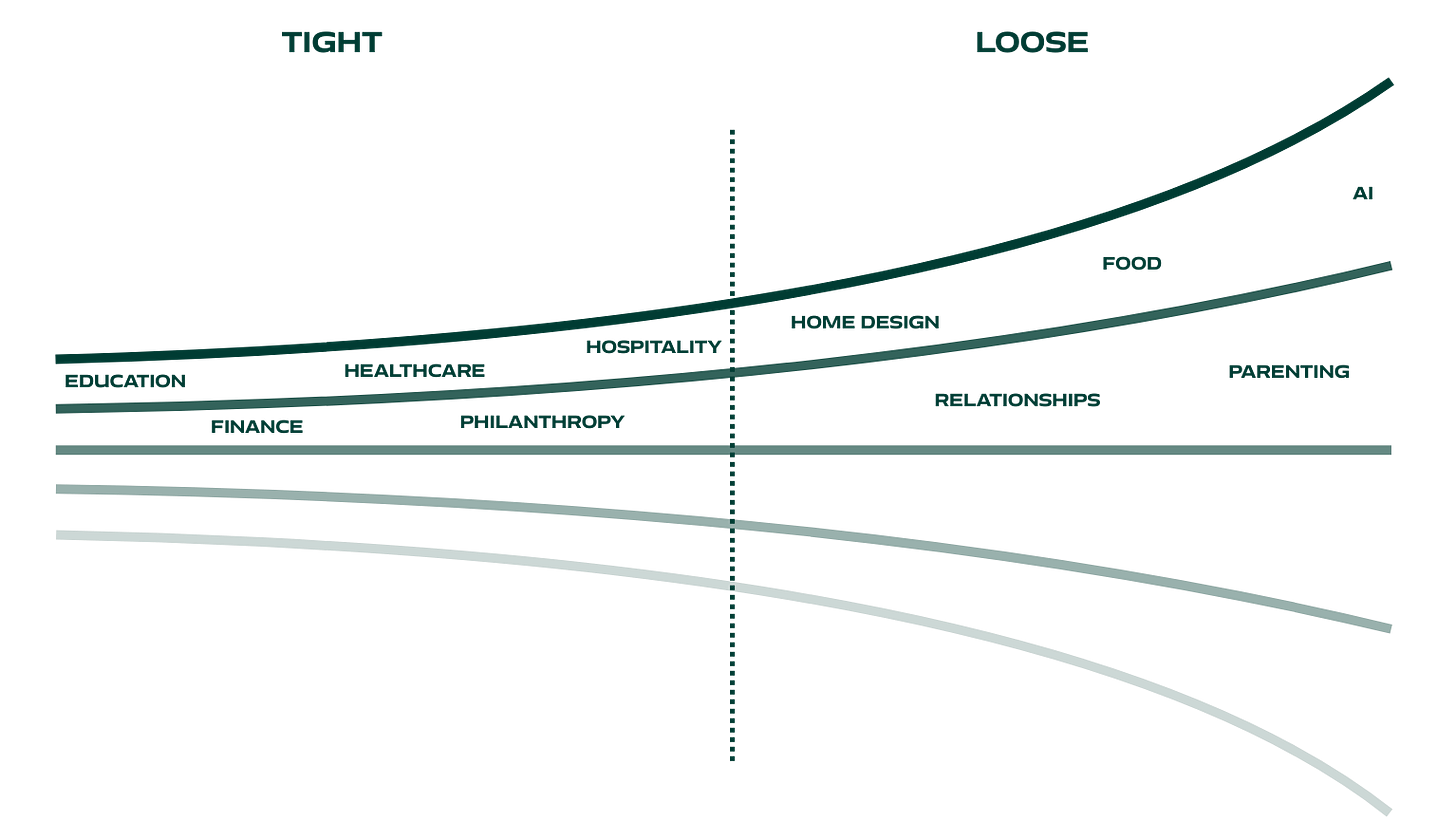
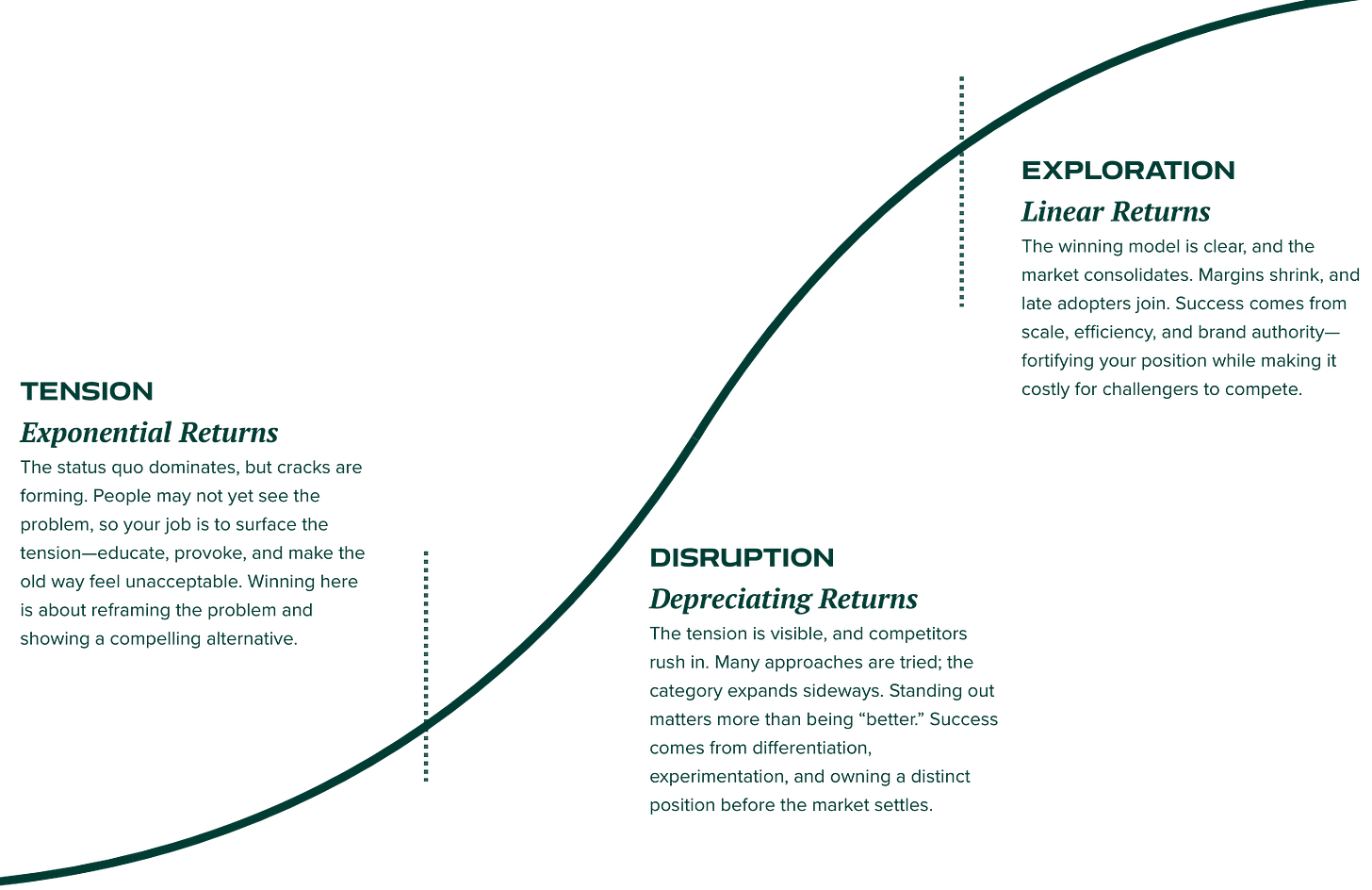
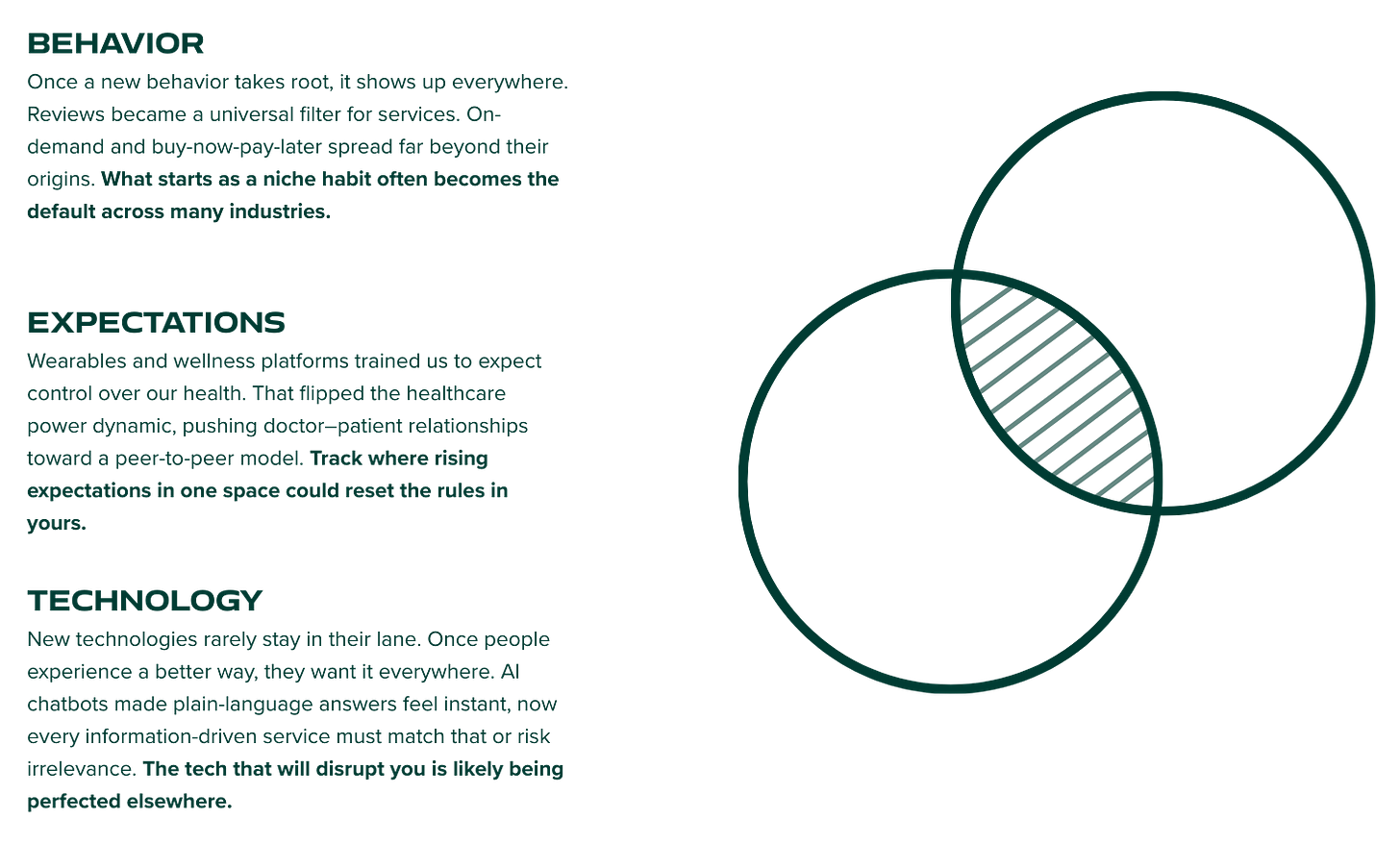
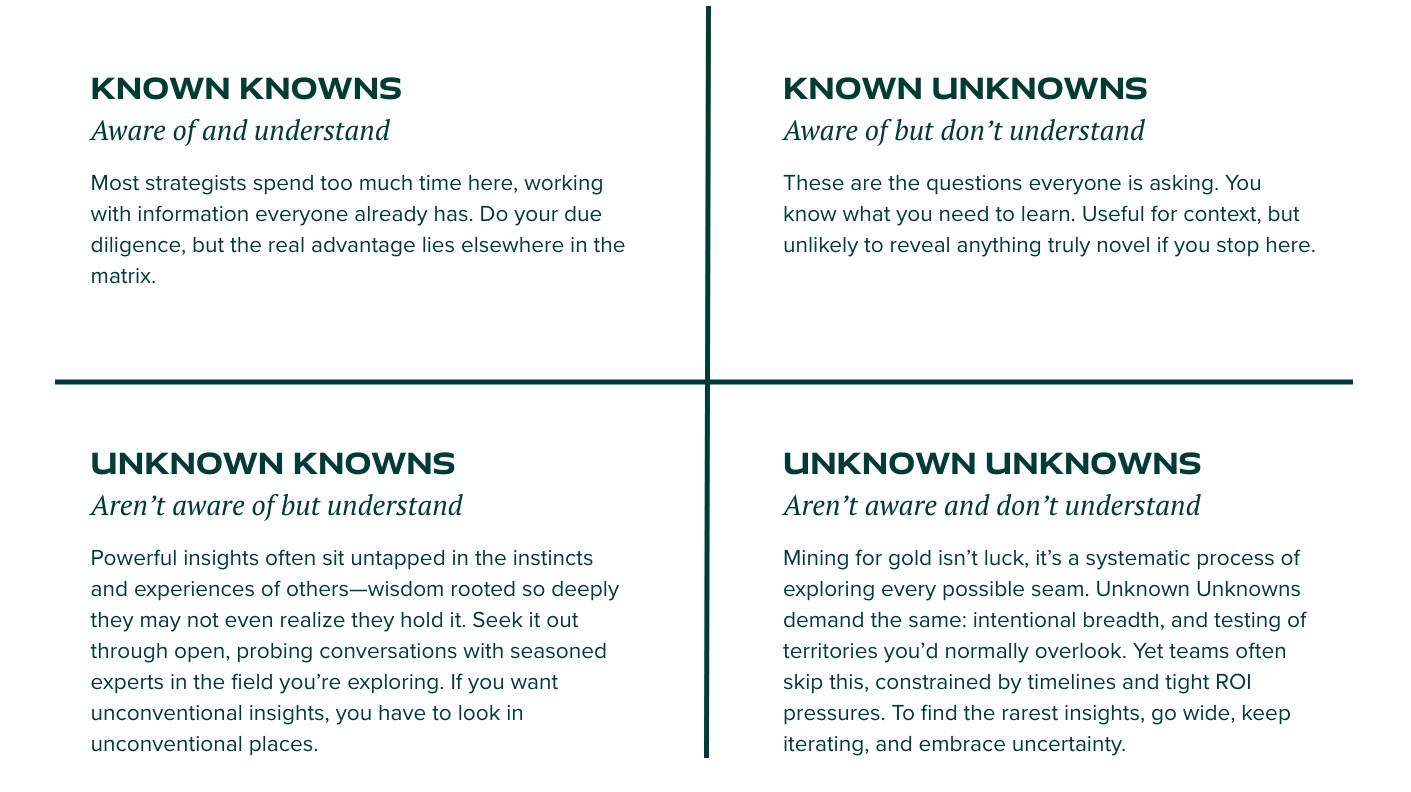

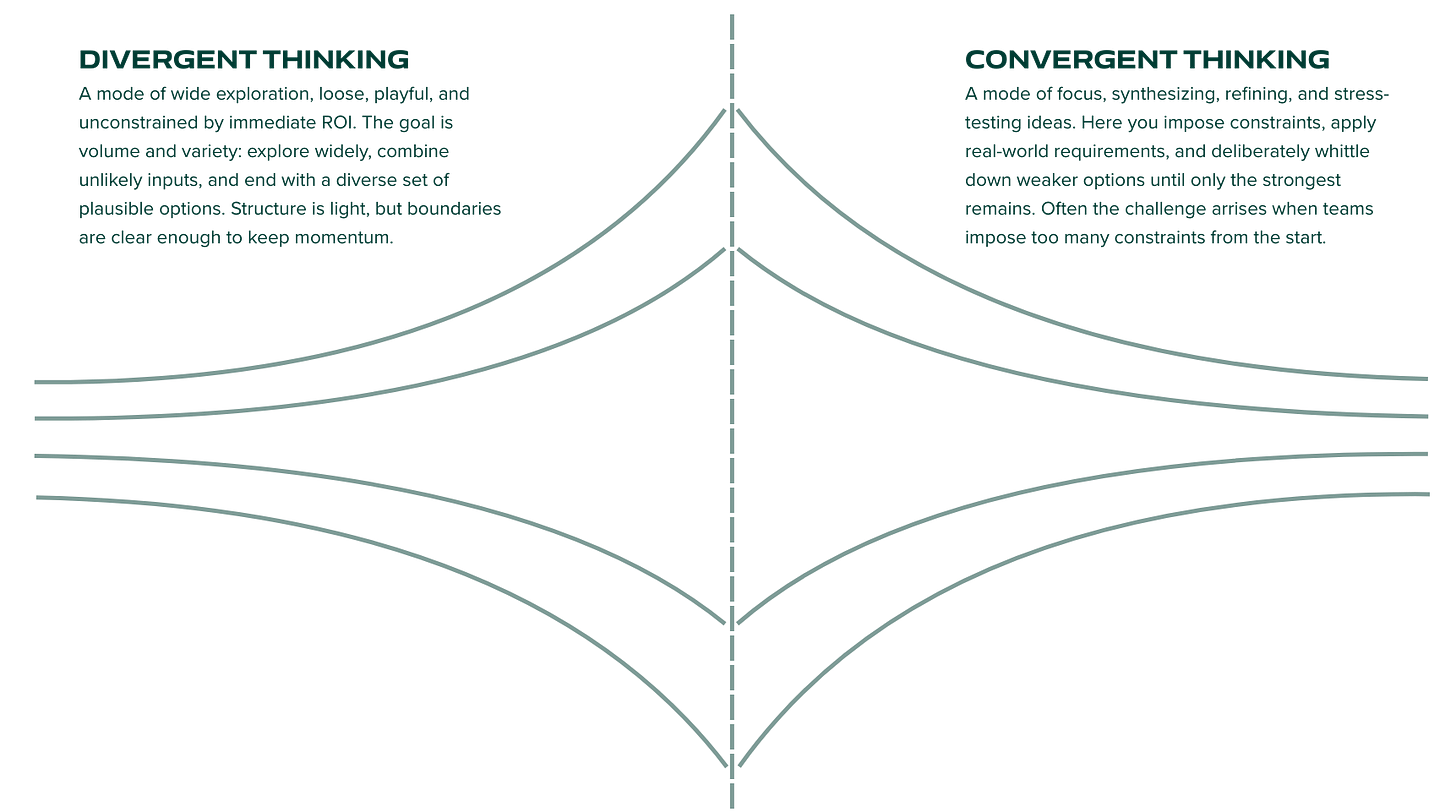
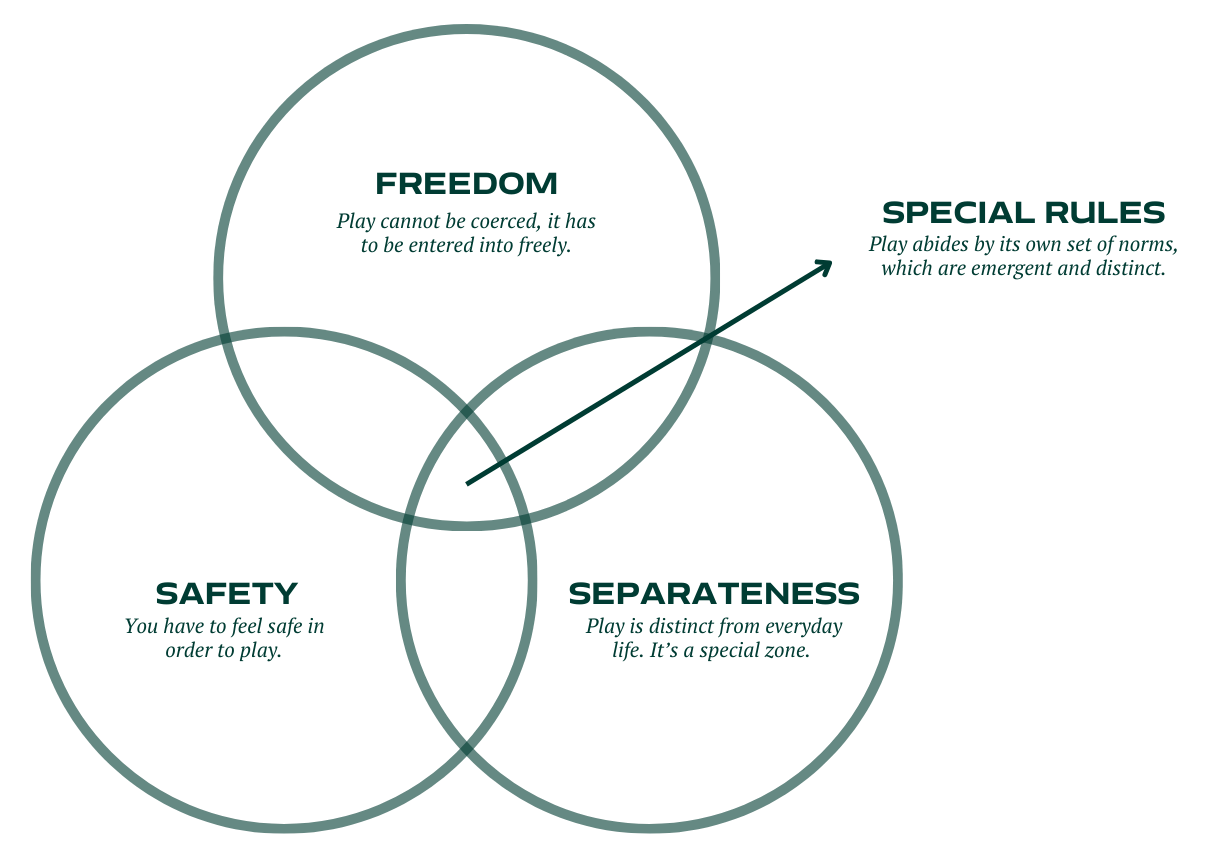
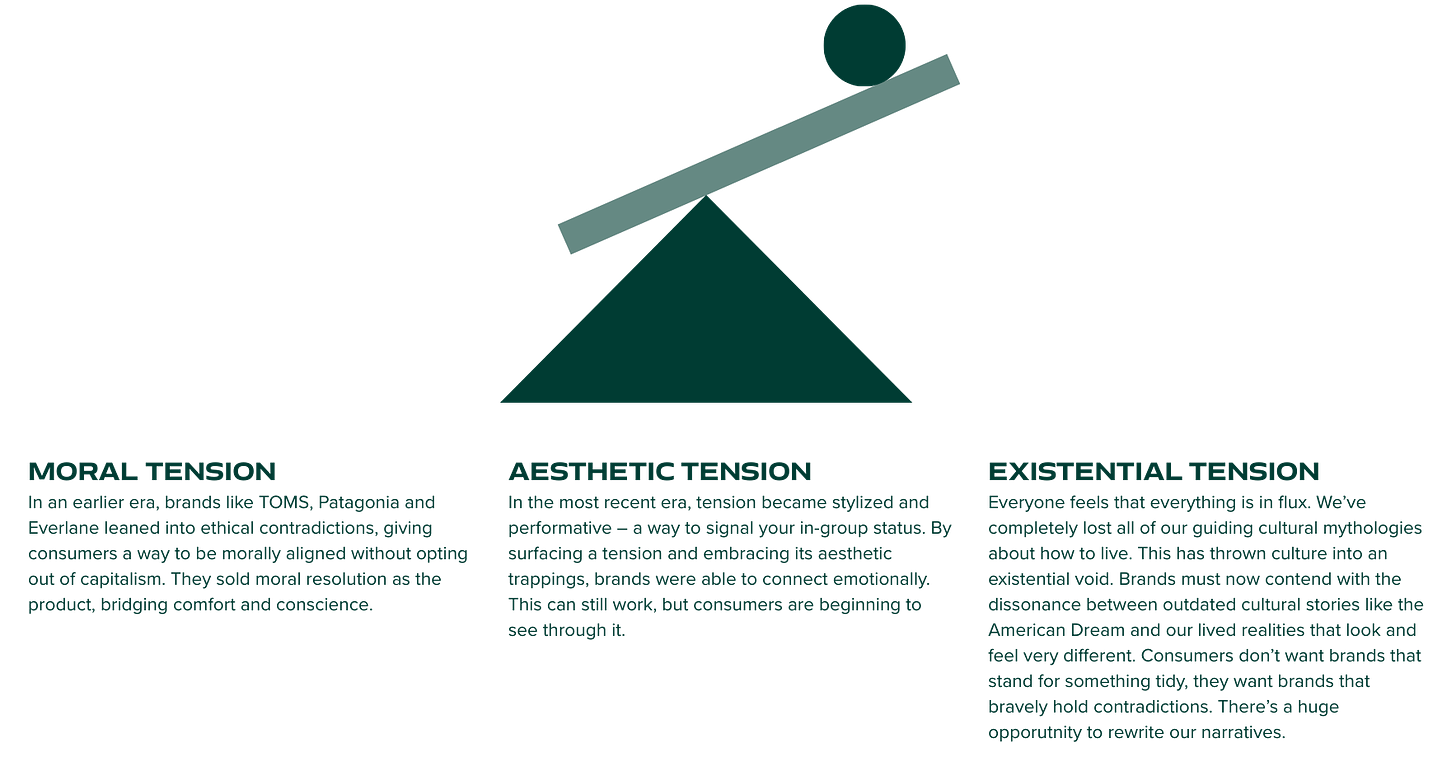


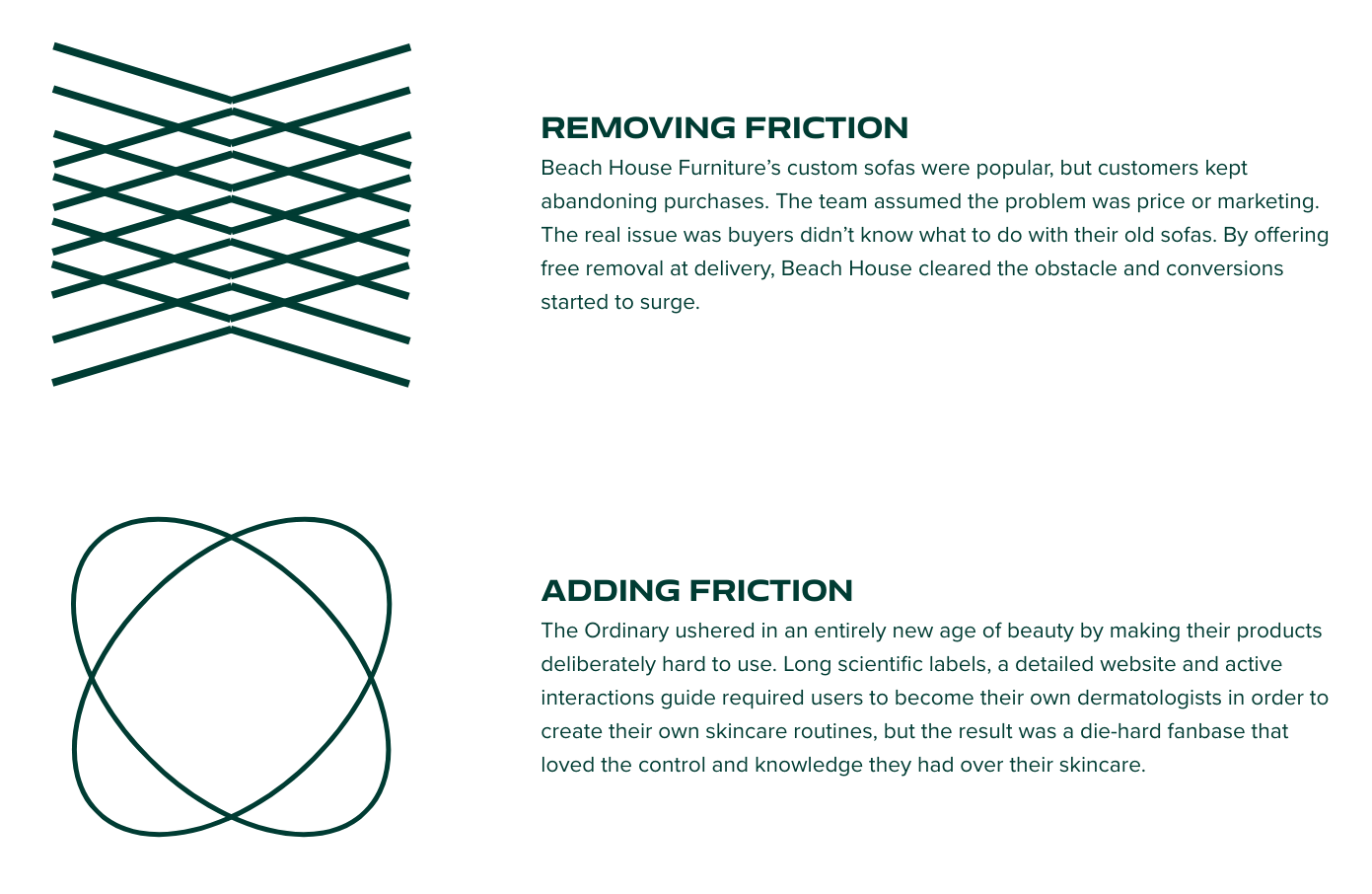
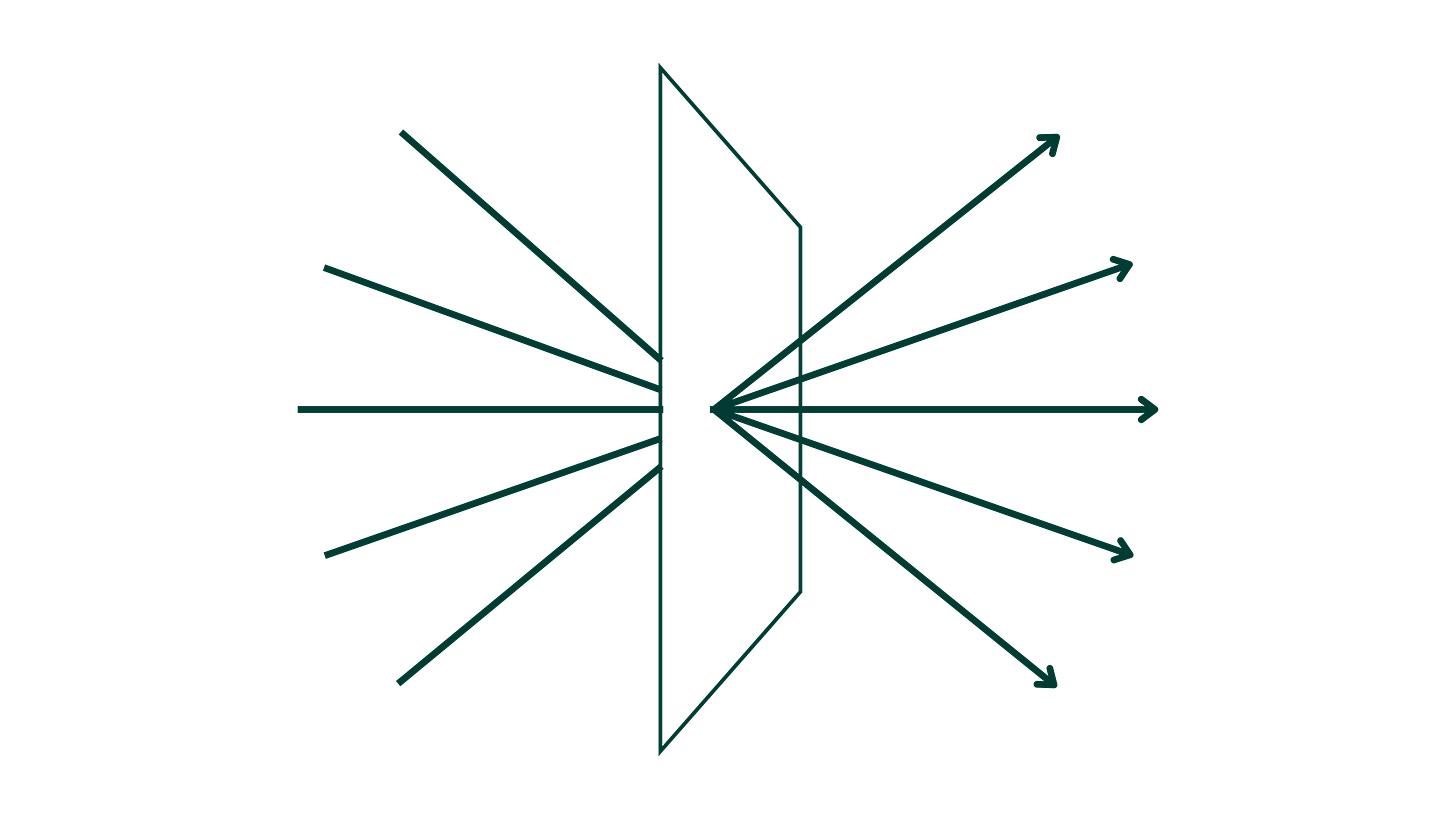


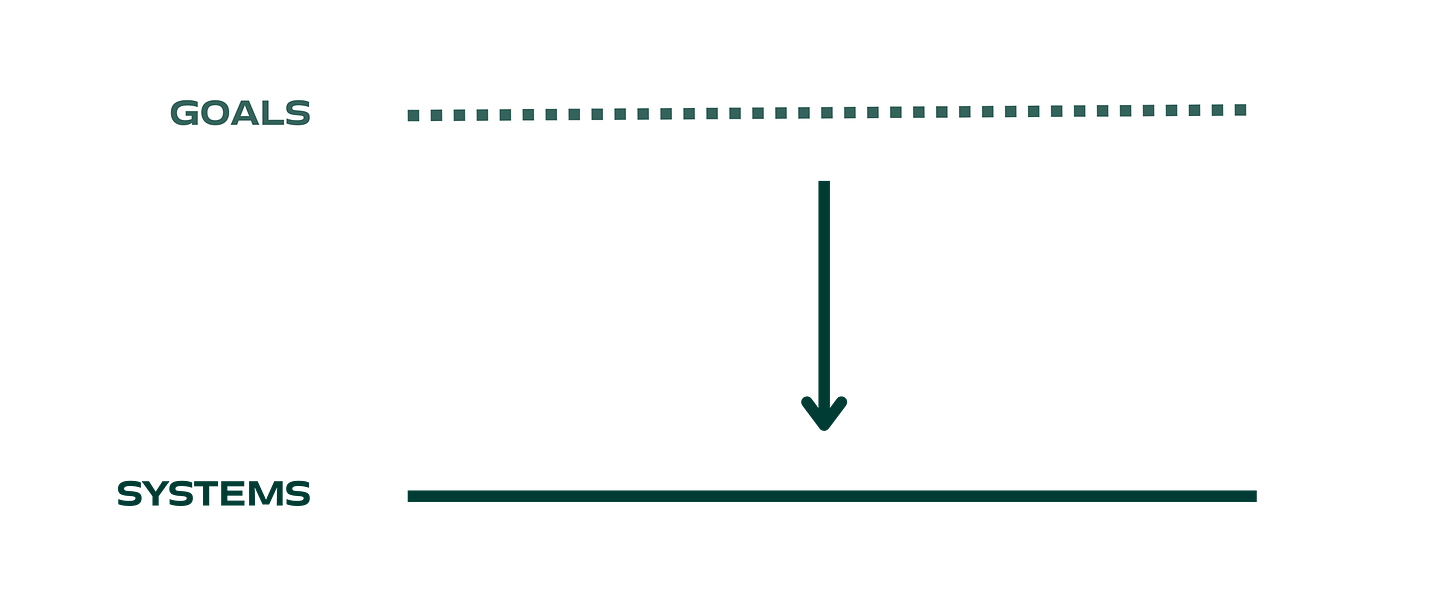


This was an absolutely incredible read. Thanks for sharing your knowledge, I know I'll be referencing this post for months and years to come until I've internalised everything.
This is an amazing curatorship of frameworks and mindset. Pure gold!!